Guide
- Home
- Guide
Brief information about destinations
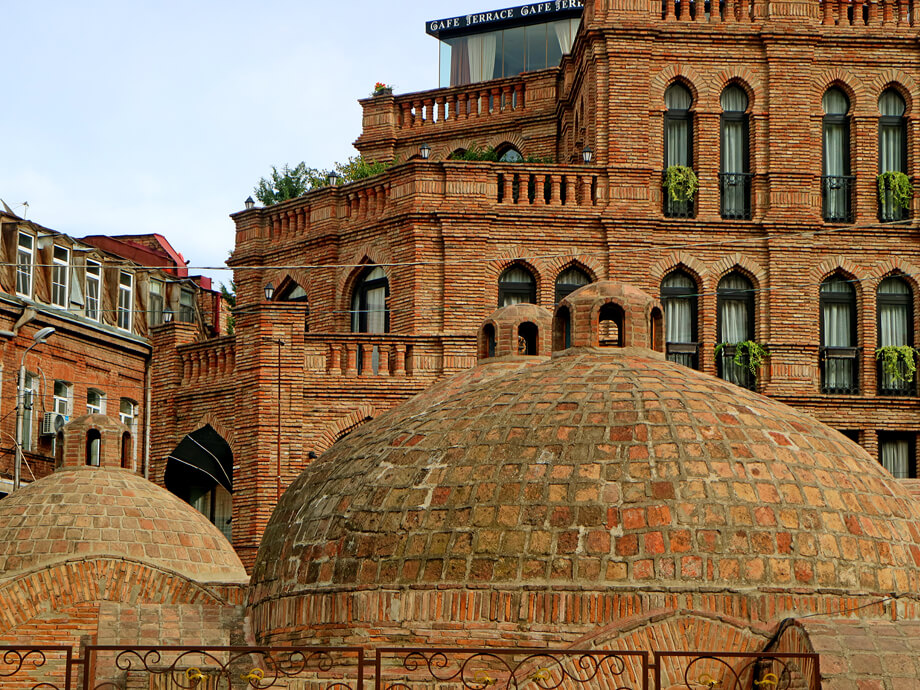
Abanotubani
The bath quarter — Abanotubani, located in the oldest part of Tbilisi, was built approximately in the XVII-XIX centuries. Tbilisi baths are mentioned in the descriptions of travelers of all eras.
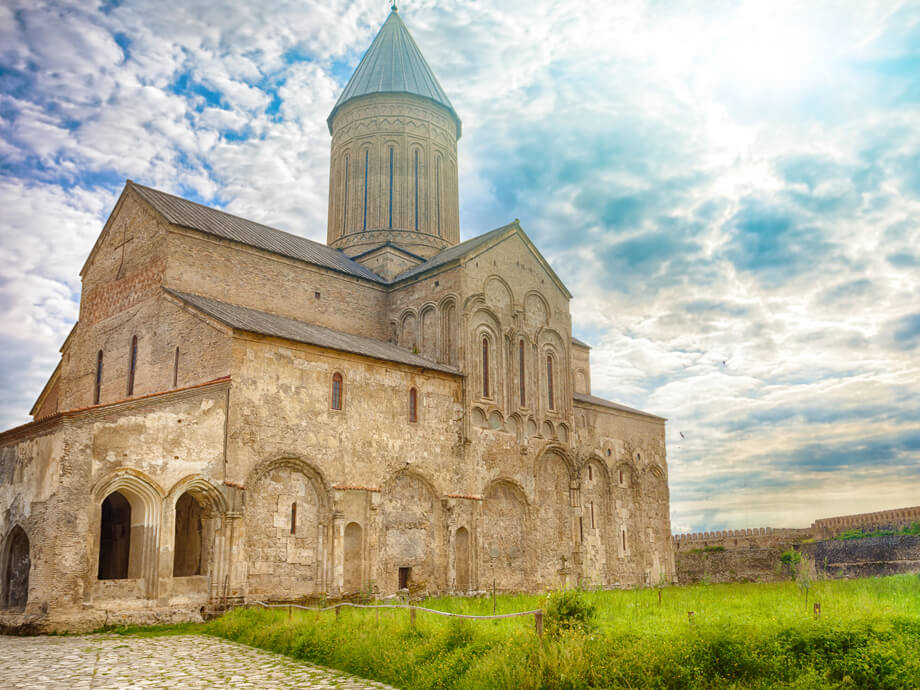
Alaverdi
Within 20 km from Telavi you can visit the shrine of Kakheti, one of the most famous medieval temples in Georgia – Alaverdi Cathedral (in the village of the same name). It was built at the beginning of the XI century and is one of the tallest buildings of its time (until 2004 it was the tallest religious building in Georgia). The temple was built on the site of the small church of St. George. And still the temple is called the Cathedral of St. George (Tsminda Georgi)
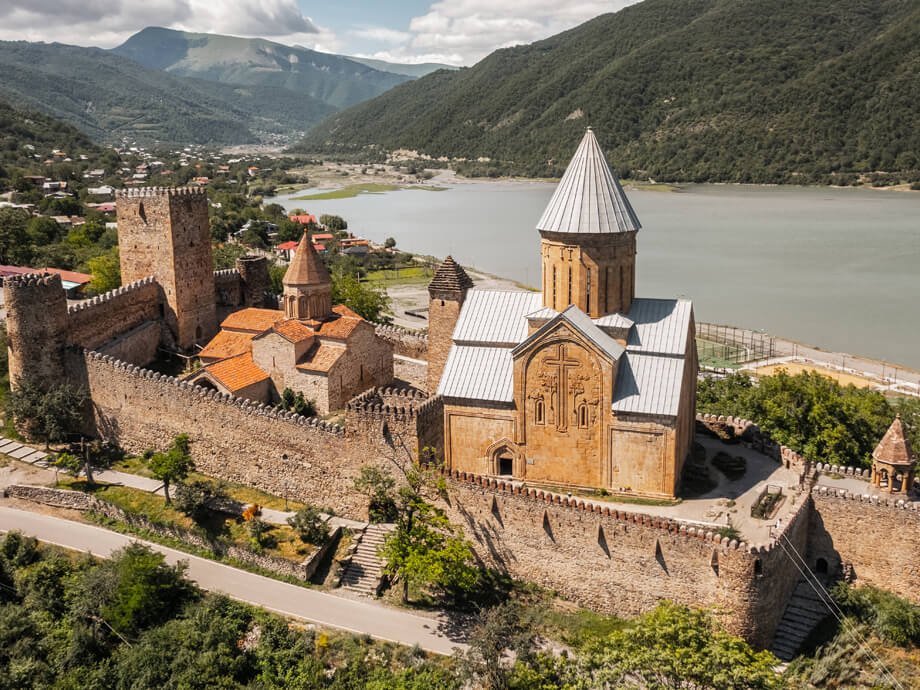
Ananuri
Ananuri castle complex is a fortress of the feudal century (XVI-XVIII). The complex consists of the following buildings: upper and lower castles, fences, towers, the Church of the Virgin, the Church of God, the church "The Healer", bell tower, octagonal chamber and reservoir.
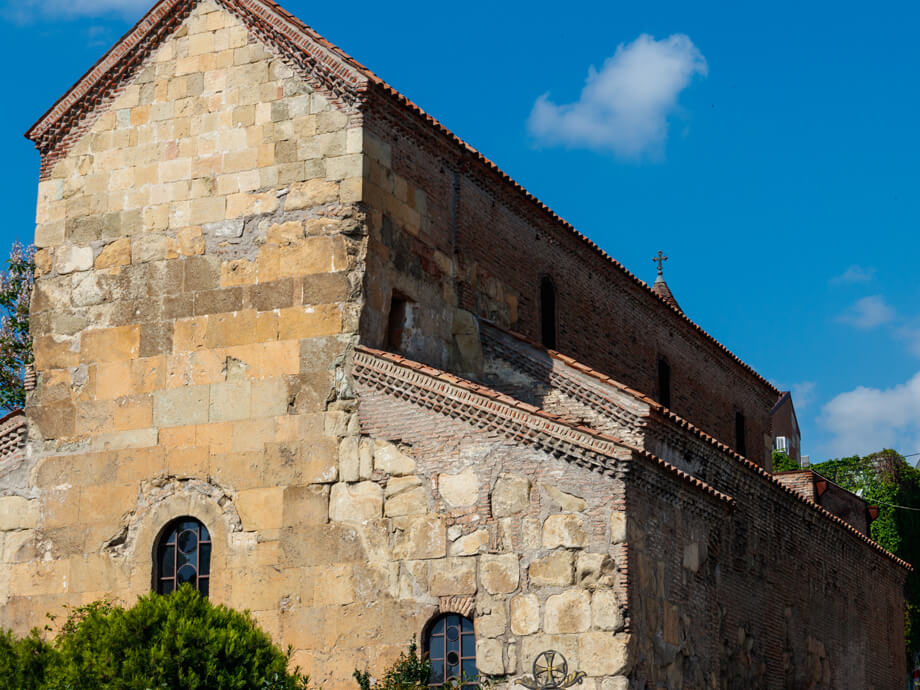
Anchiskhati Basilica
Anchiskhati Basilica (Church of the Nativity of the Virgin Mary VI century) is the oldest surviving stone church in the city. The construction of this sacred temple began shortly after the capital of Georgia was moved from Mtskheta to Tbilisi.
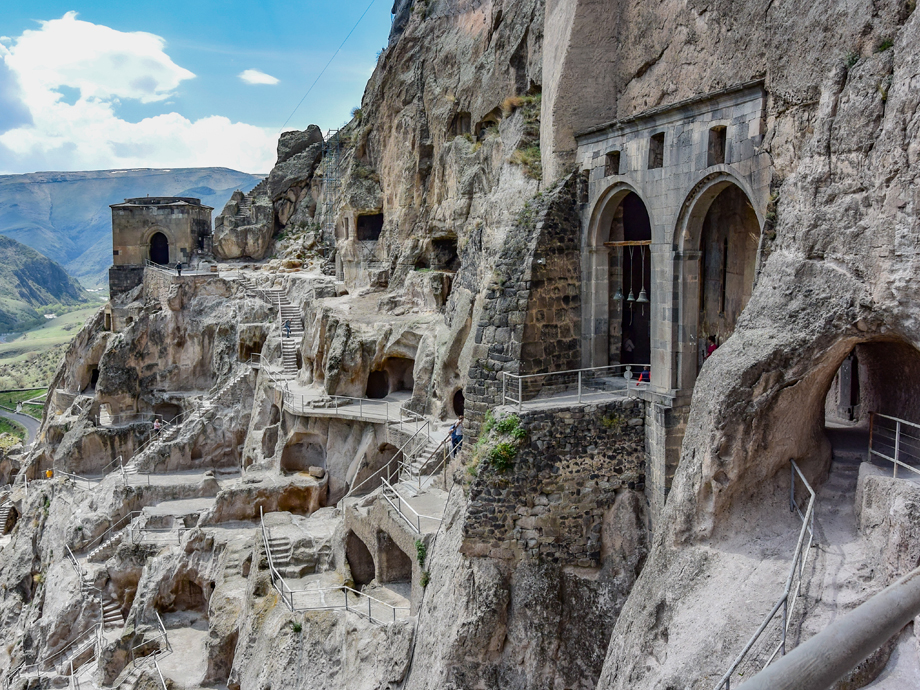
Vardzia
The Vardzia cave monastery complex was built during the reign of King George III and his daughter, Queen Tamara. There is a legend about the origin of the name of this outstanding monument of medieval architecture.
One day Tamara was playing there with her uncle, who soon lost the girl in the cave maze. And then Tamara shouted loudly: "Ak var, dziya!", which means in Georgian: "I'm here, uncle!". The last two words echoed throughout the cave complex and were heard by King George III. He ordered that the complex under construction be called exactly the following – "vardziya".
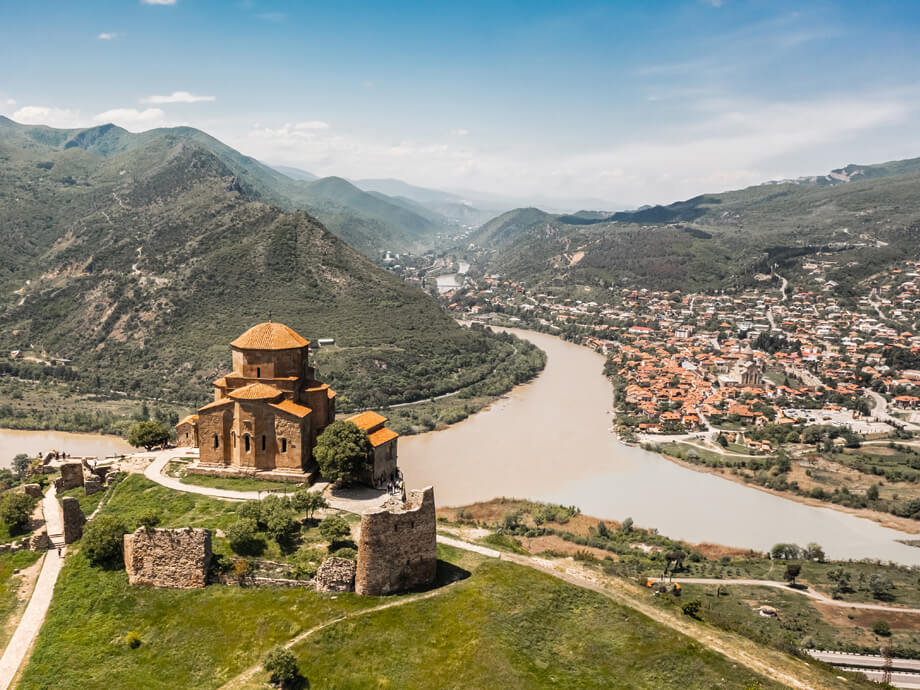
Jvari (Temple of the Holy Cross)
Jvari Temple stands on a high mountain, offering a beautiful panorama of the ancient capital – Mtskheta, where two majestic rivers – Aragvi and Kura merge. From here, Tbilisi looks like a small settlement in the middle of mountains and rivers. The Jvari Church was built in the VI century. Since the Temple is built very close to the edge of the cliff it can be seen from all sides and from a long distance.
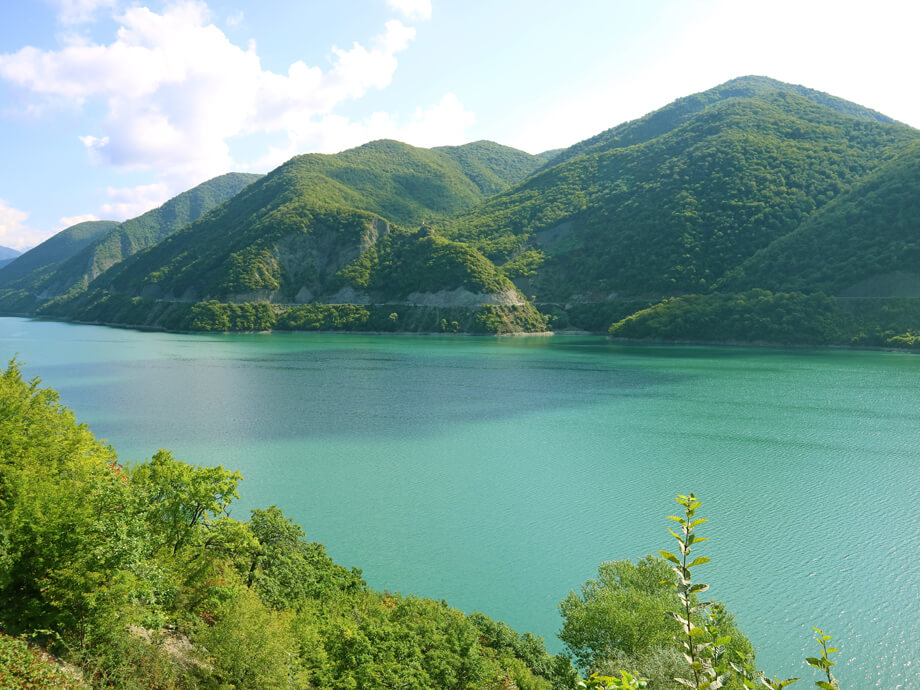
Zhinvali
In fact, it is not a lake, but a reservoir of Zhinvali. The water in it does not just reflect the blue sky - it is really blue! If there is a desire to take a dip in the cool clear water after a long journey, you should not deny yourself this pleasure. Just imagine that the entire perimeter of the lake is surrounded by high mountains, which are completely covered with forest. A lot of bright photos and positive emotions from visiting this place are provided to you. Artificial reservoir on the Aragvi River. The Georgian Military Road passes by it. The 100-kilometer road to Shatili, the main village of the Khevsureti region, begins at the southern end. Ananuri Fortress stands on the northern shore of the Zhinvali reservoir.
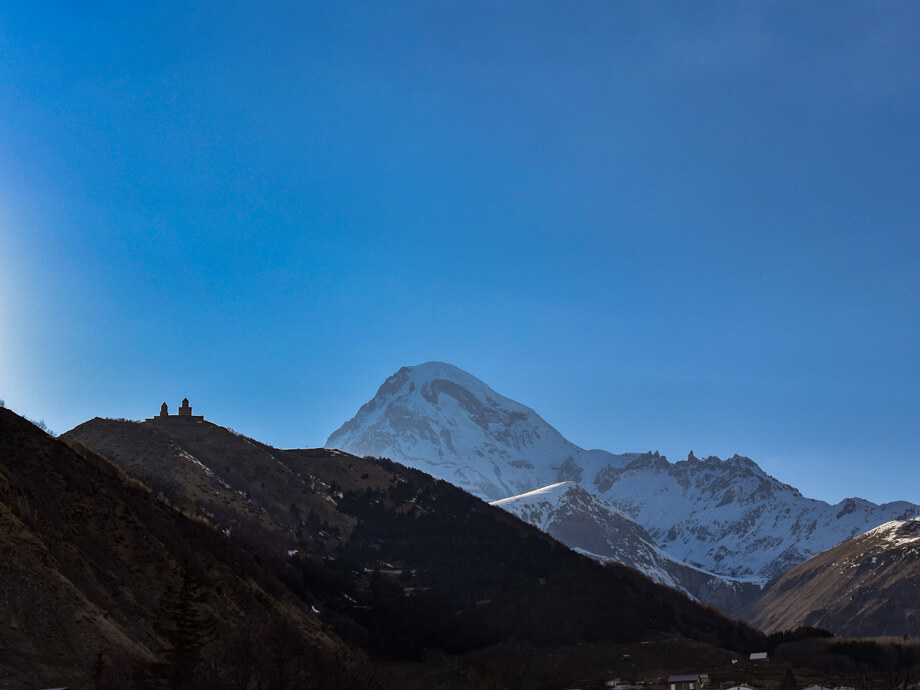
Kazbegi
Stepantsminda (translated from Georgian as St. Stepan) or Kazbegi is a municipality located in the Mtskheta-Mtianeti region in eastern Georgia, on the historical territory of Khevi. It has been inhabited since ancient times. There is a discovered Kazbek treasure, dated to the old chronology of the VI-V centuries, which is associated with the religious cult of the ancient Caucasian tribes. The nature of Kazbegi is beautiful: Kelitsadi Lake Gvelet waterfalls Arshin waterfalls Dzhute cliff Truso Valley Betlem hut (Meteorological Station) Cultural monuments: - Gergeti Trinity - Dariali Monastery Complex - Khevi Sioni Church Complex - Zakagori - Bath Monastery of the Mother of God - Elijah the Prophet Monastery – Ketrisi
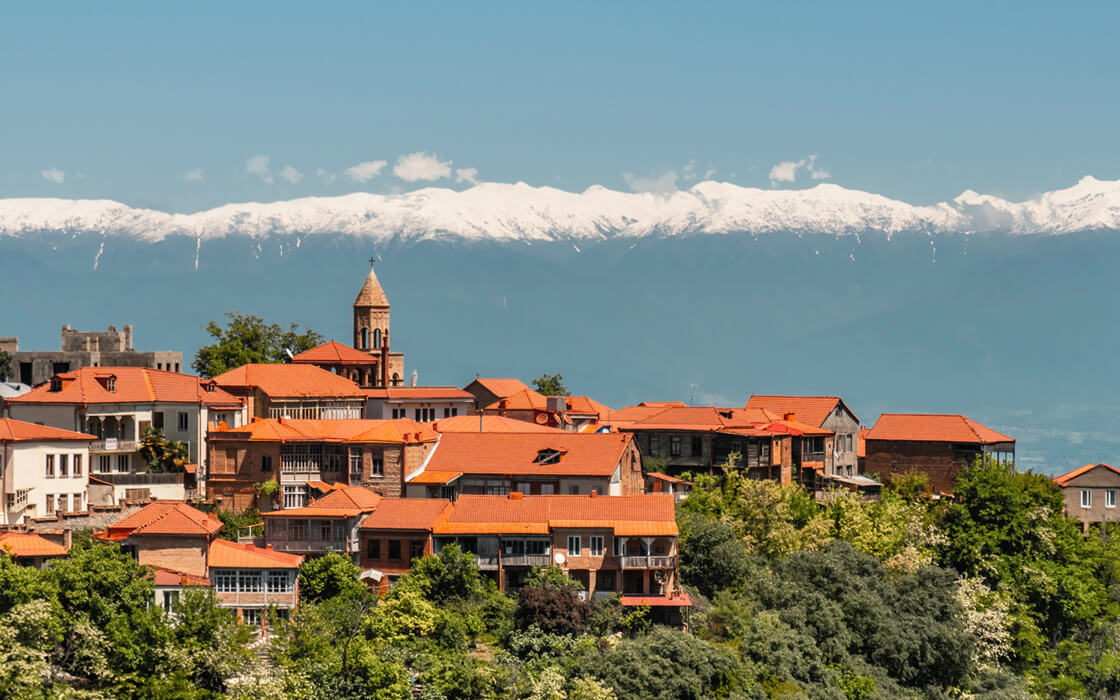
Kakheti
Kakheti is the edge of eastern Georgia, which will take possession of the historical and geographical provinces of Kakheti, Khereti (partially) and the territory of Tusheti. Traditional dishes: shish kebab fried on grapevine trimmings, hashlama, chakapuli, chikhirtma and others. It is impossible to talk about Kakhetian cuisine, and we did not mention Kakhetian wine. Kakheti is a wine region and occupies a special place in the production of Georgian wine. There are up to 200 wine varieties in this area. The most popular breeds are Rkatsiteli, Mtsvane Kakhuri, Khikhvi, Kisi and Saperavi. Nature:
- Black rocks
- the lake Rocho
- Waterfall Ninoskhevi Waterfall (Gurgeniani)
- Eagle Gorge
- Gareji Desert
- Ortskali Lake
- Oreti Lake
- Khadori waterfall
- Muddy Volcano Kilakupra
- Kakliskure
Cultural monuments:
- villages of Tusheti (Diklo, Shenako, Girev, Farsma, Chesho, etc.)
- David Gareji
- Kvetera
- Ikalto monastery
- Alaverdi
- Gremi
- Nekresi Monastery
- Khornabuji Fortress
- Elijah Monastery
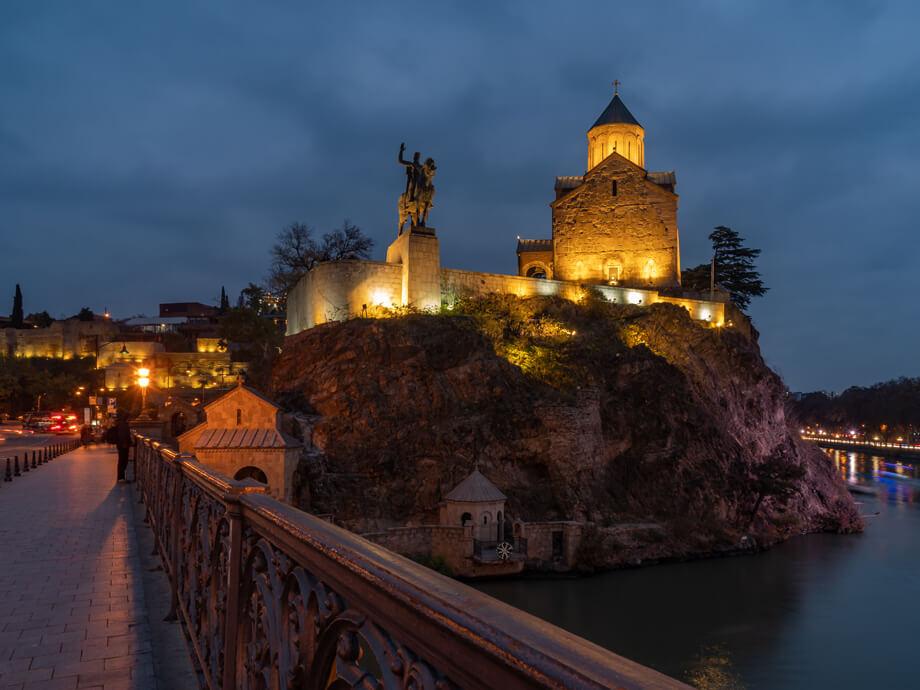
Metekhi Castle
Metekhi is not only a temple, it is also a historical district of Tbilisi on a high cliff overhanging the bank of the Kura River. The bronze equestrian statue is a monument to Vakhtang Gorgasali, which has become a symbol of Tbilisi. The temple of Metekhi, XII century, was erected on the site of the church of V century, with burial of the Orthodox martyr – Queen Shushanik, killed by her own husband.
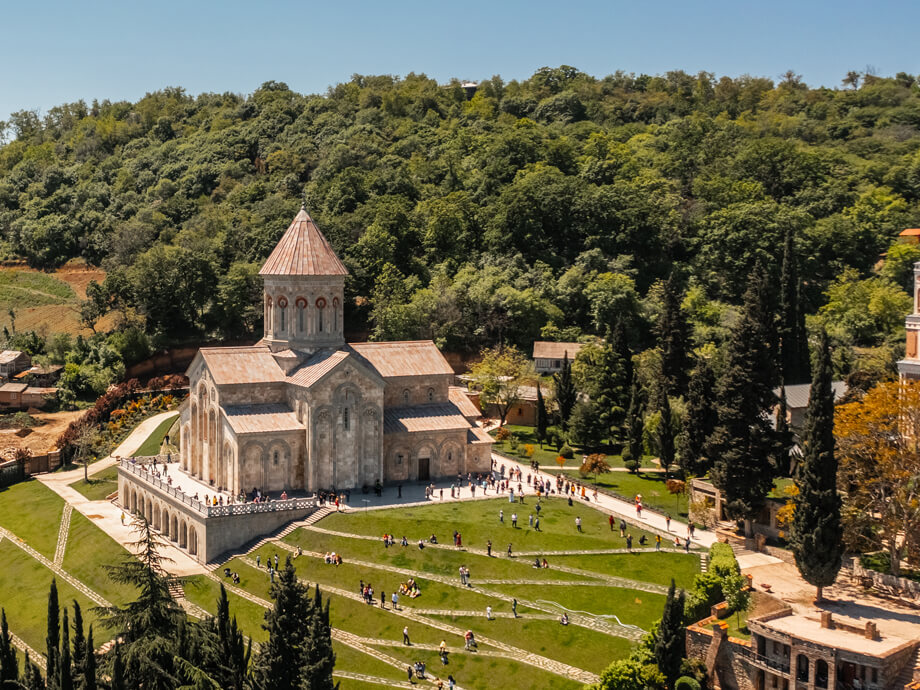
Bodbe Monastery
Bodbe is a village 2 km away from the city of Sighnaghi, which is famous for the monastery of St. Nino (sometimes called "Bodbe Monastery"). The monastery was founded in the first half of the IV century by King Mirian, immediately after the death of St. Nino. The Church of St. Nino now houses several historical finds, including a bowl from the first century AD, a medieval monastery bell, as well as more recent finds.
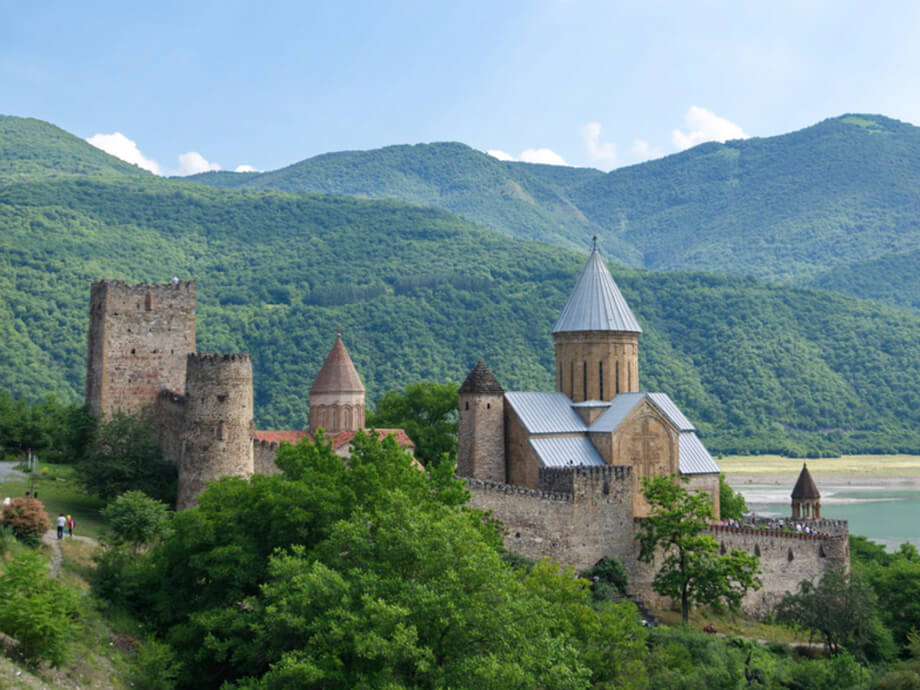
Samtavro Monastery
In Mtskheta is the active female monastery of Samtavro (XI century), where King Mirian and his wife Nana are buried - the first to be baptized into the Christian faith by St. Nino in 337. The monastery itself was built in 1820. But it was based on a small ancient wooden church of the IV century, built by King Mirian. The Samtavro temple contains many shrines, part of the life-giving pillar, the miraculous icon of the Iberian Mother of God, the miraculous icon of St. Nina, donated from St. Petersburg by King George XII to his grandchildren in 1870, the graves of the holy kings Mirian and Nana, the relics of St. Abibos Nekres (located under the throne in altar), the relics of St. Shio Mgvimeli, part of the stone from the grave of Saint Nina from Bodbe and other relics.
